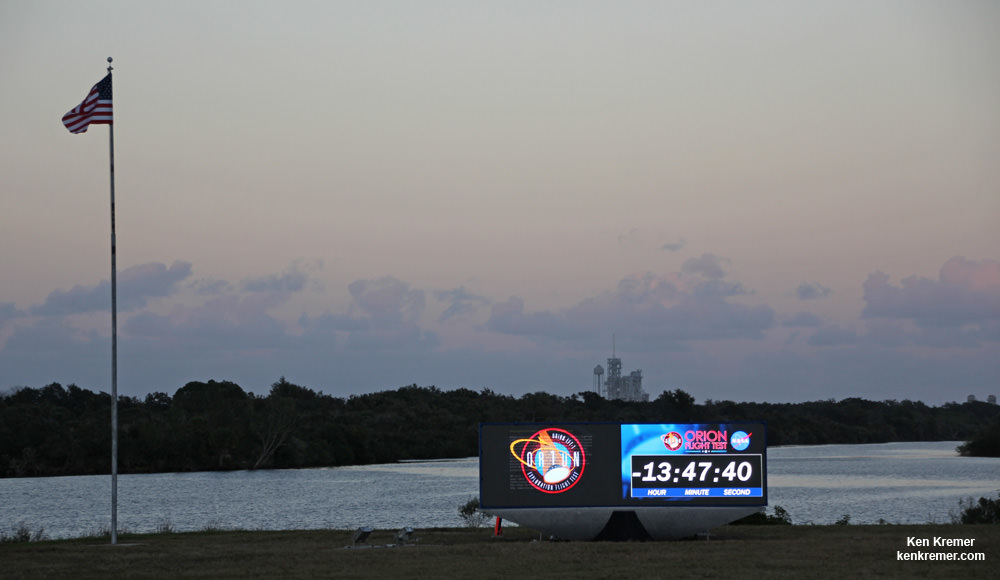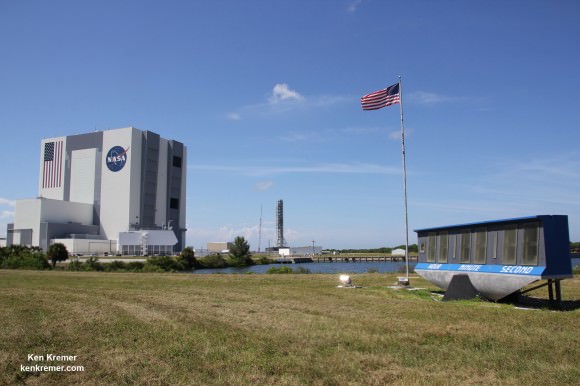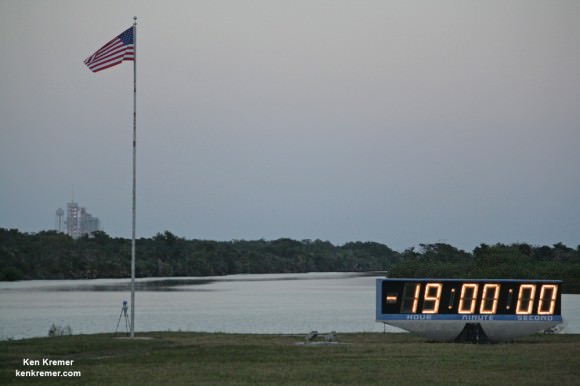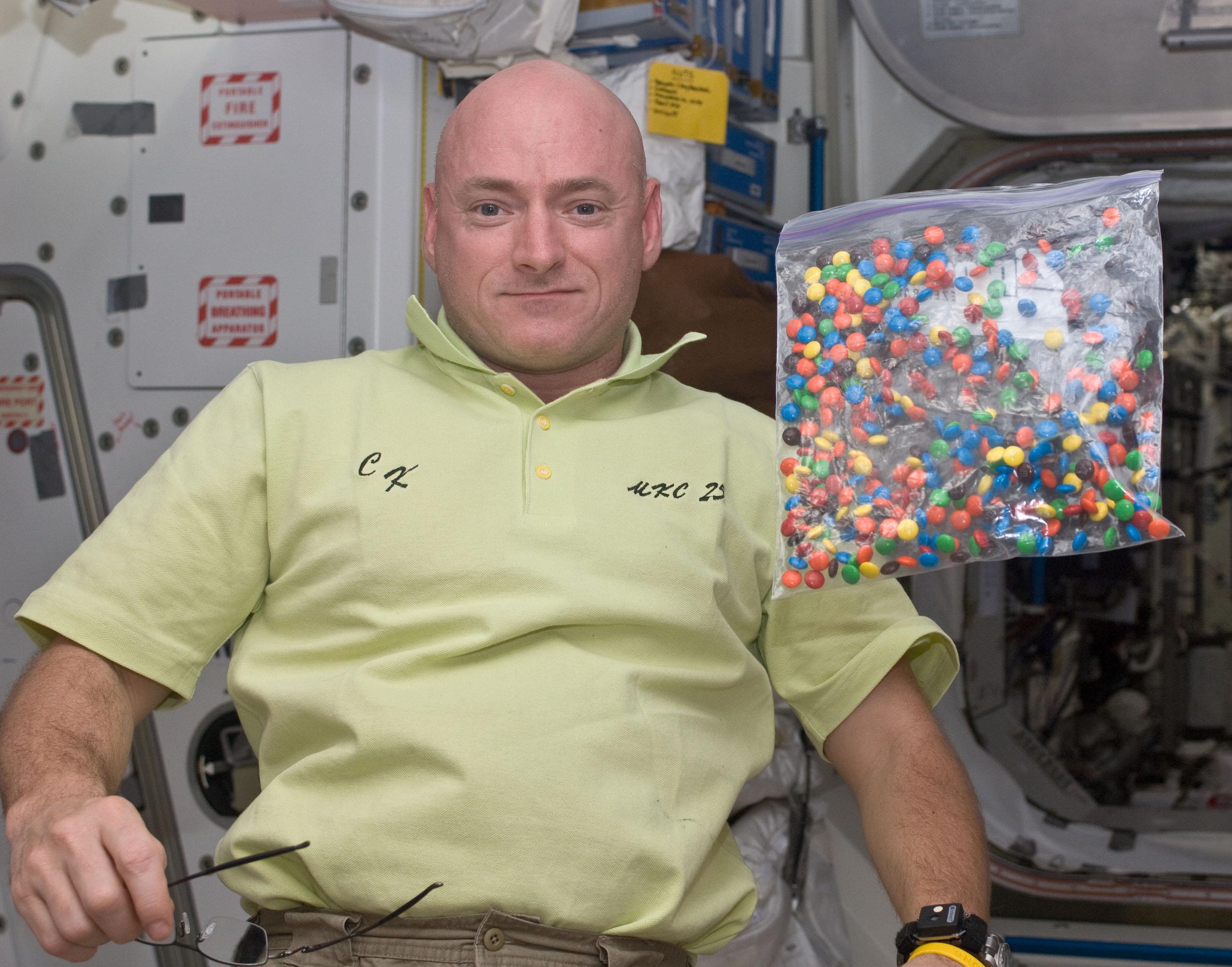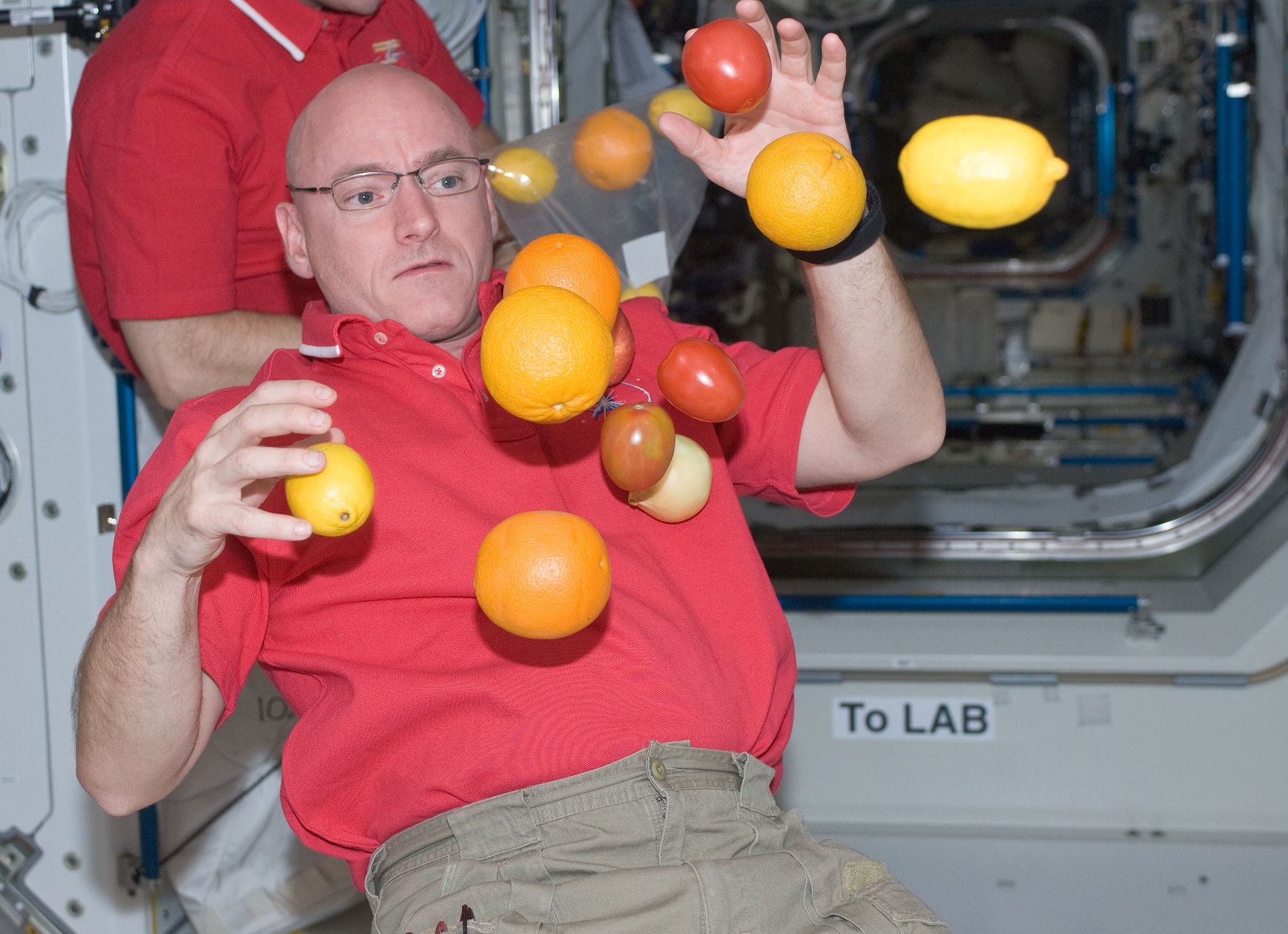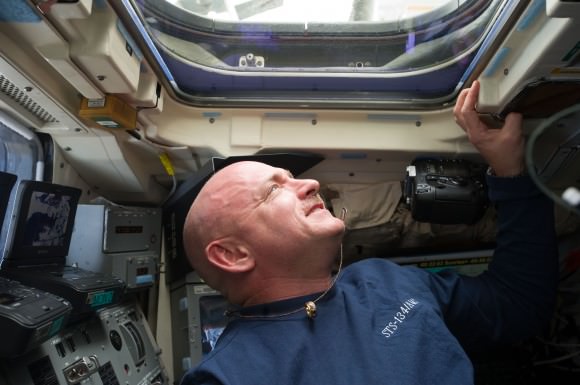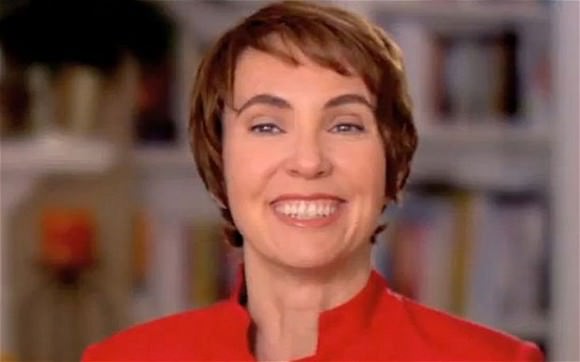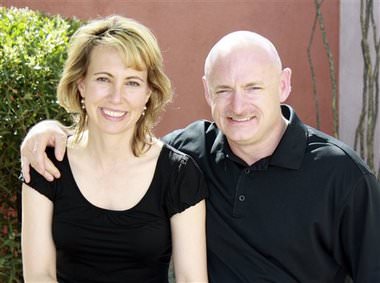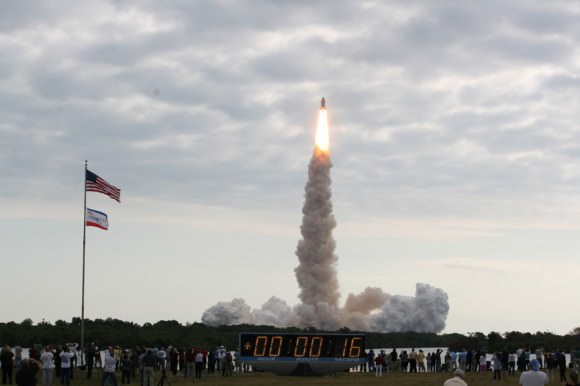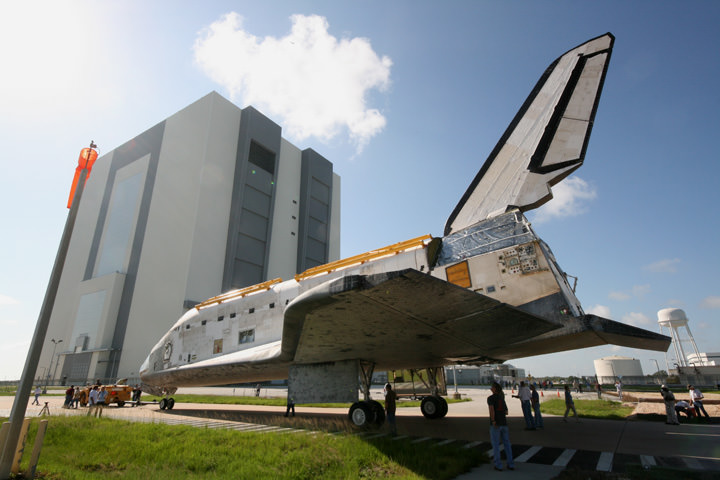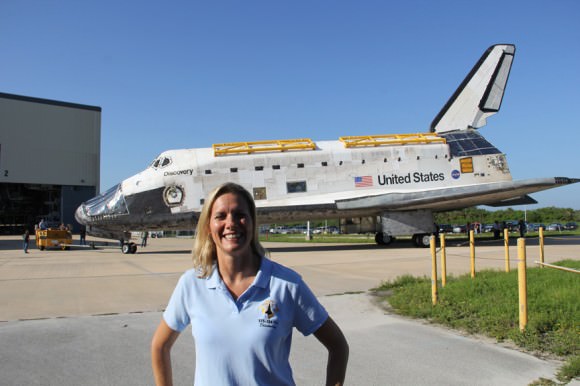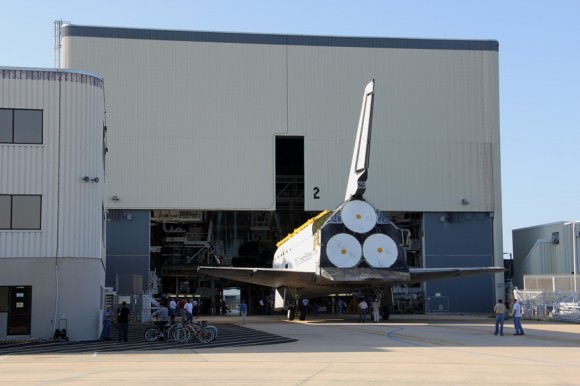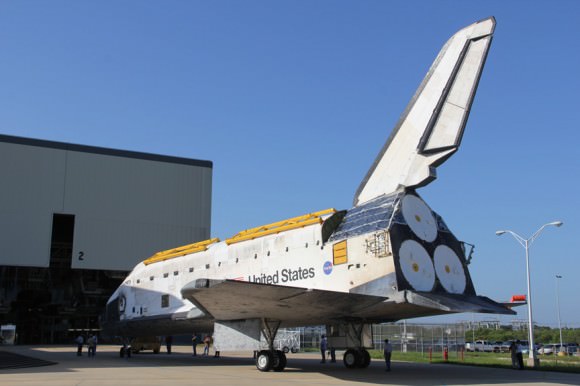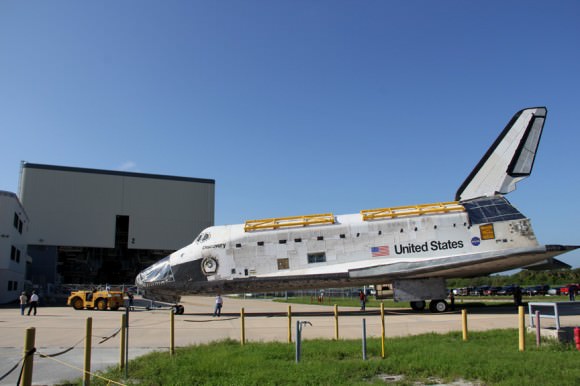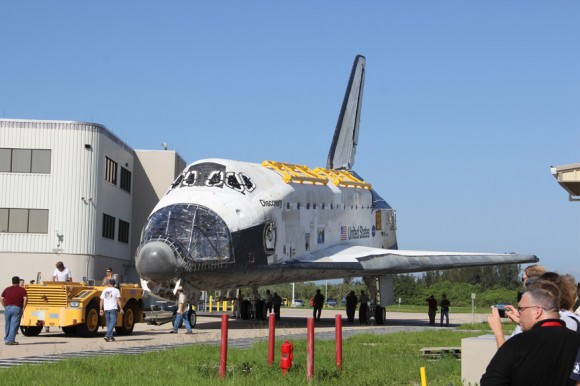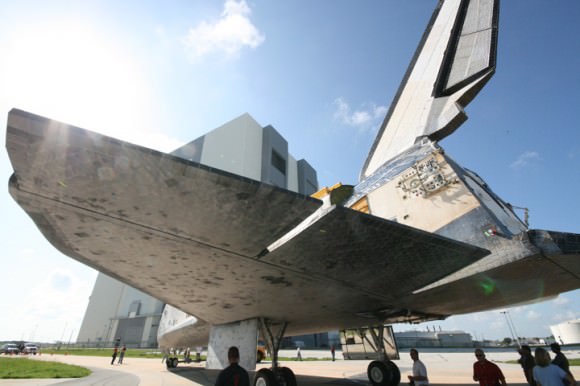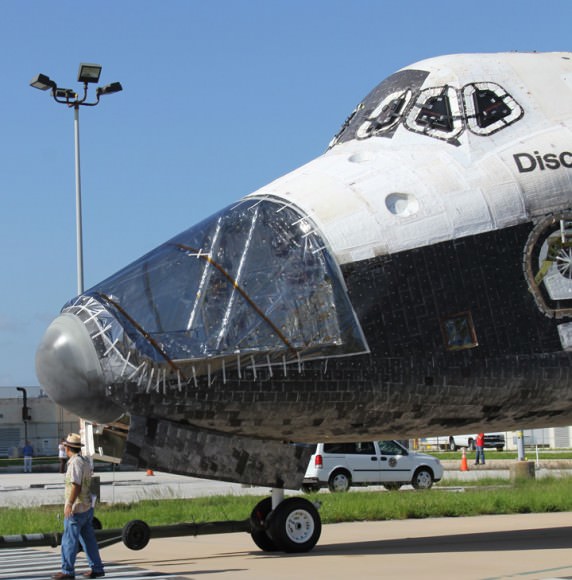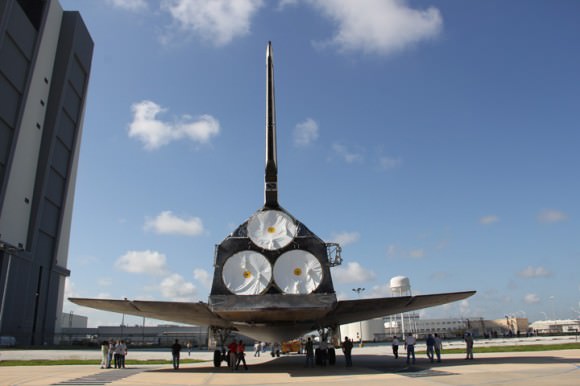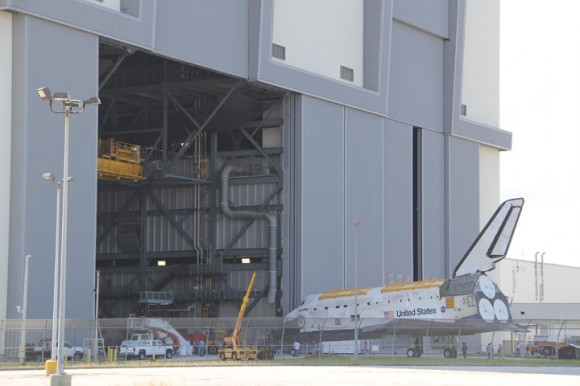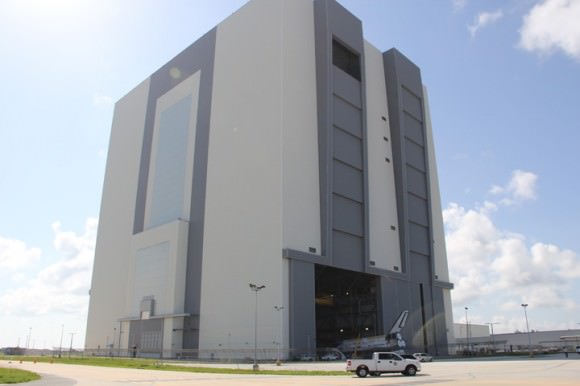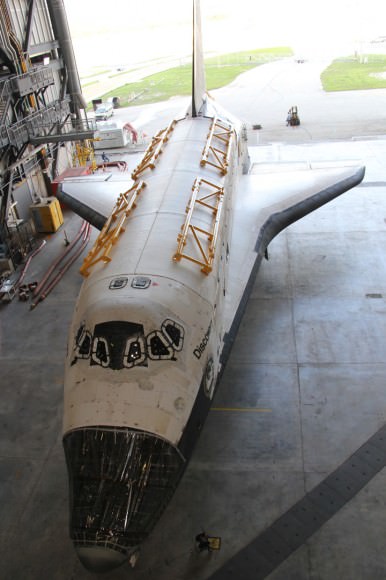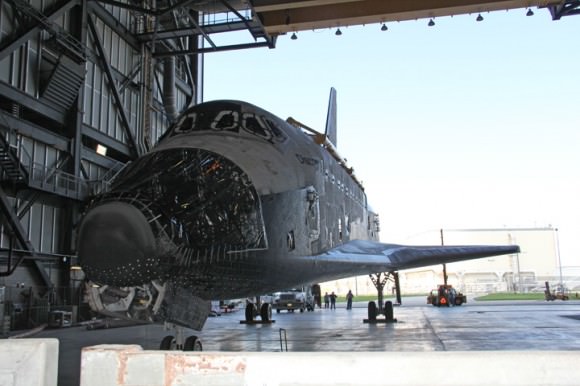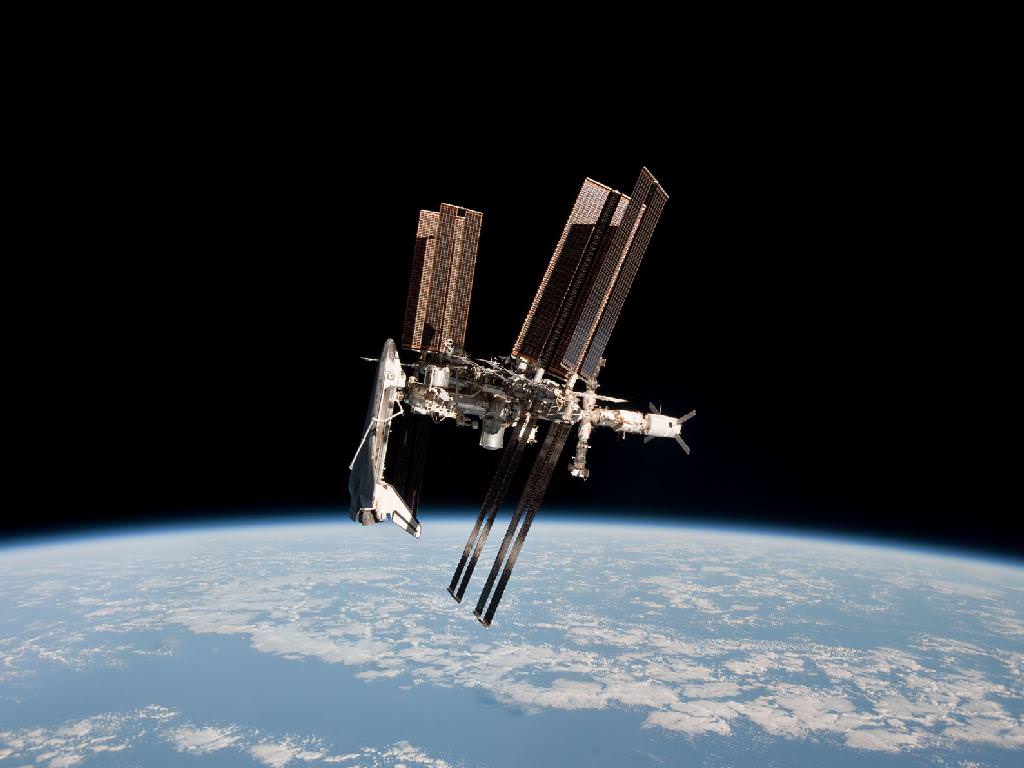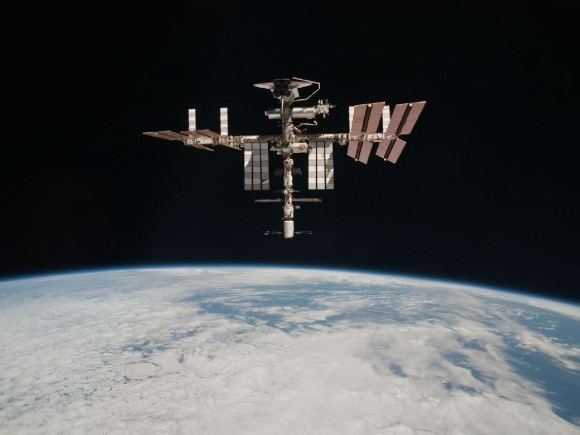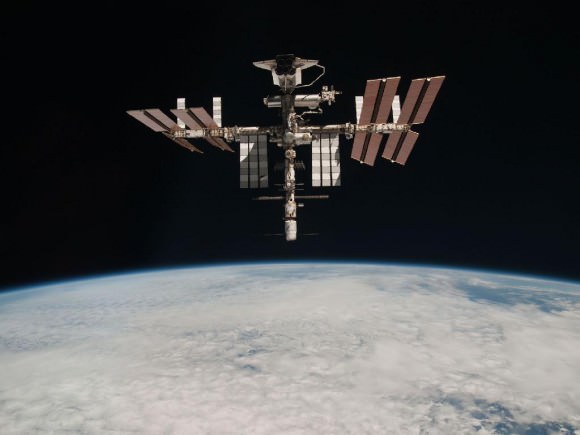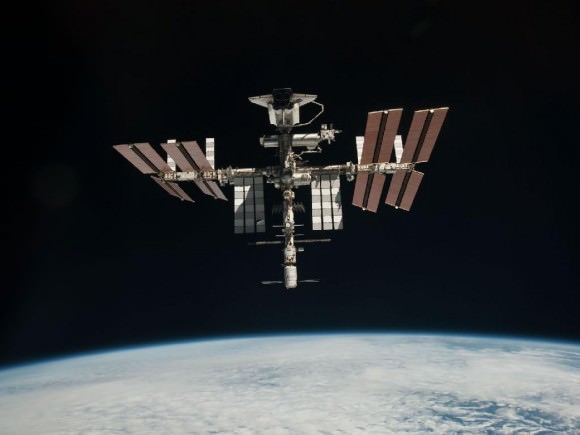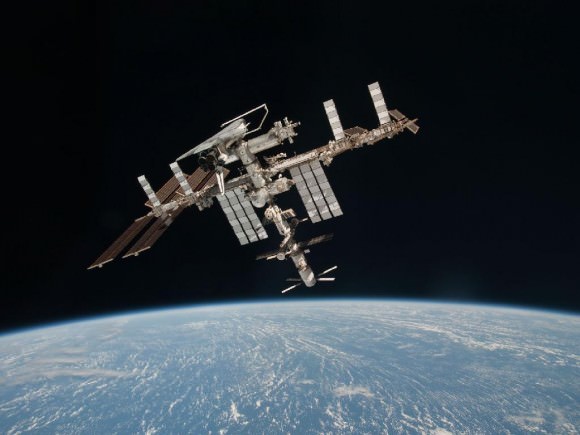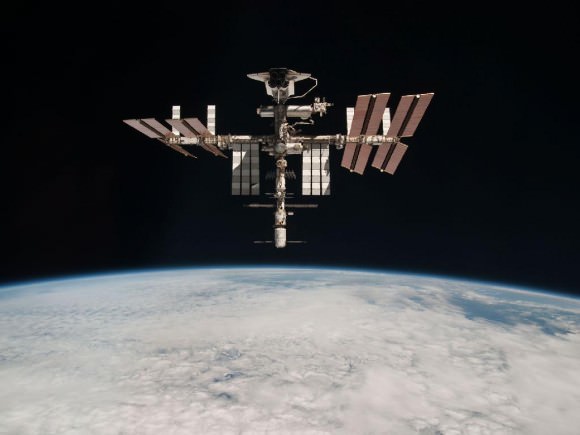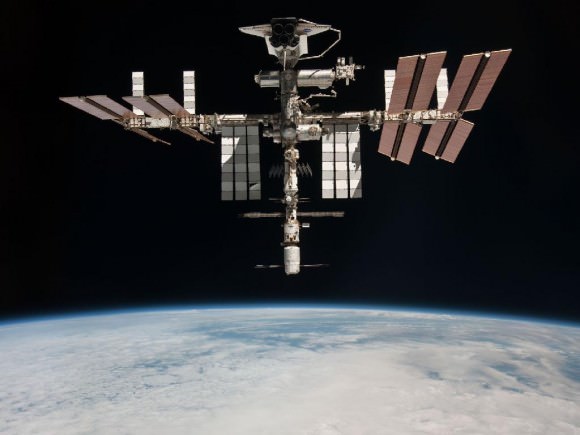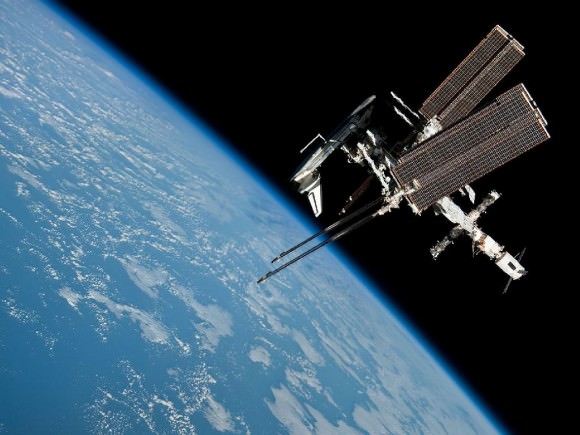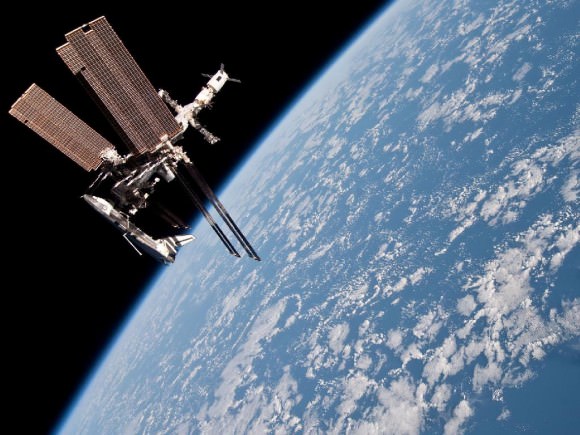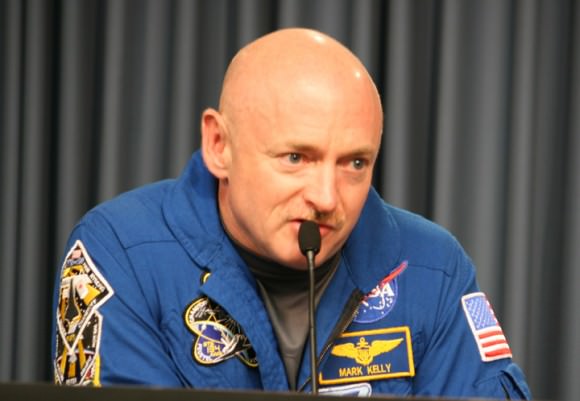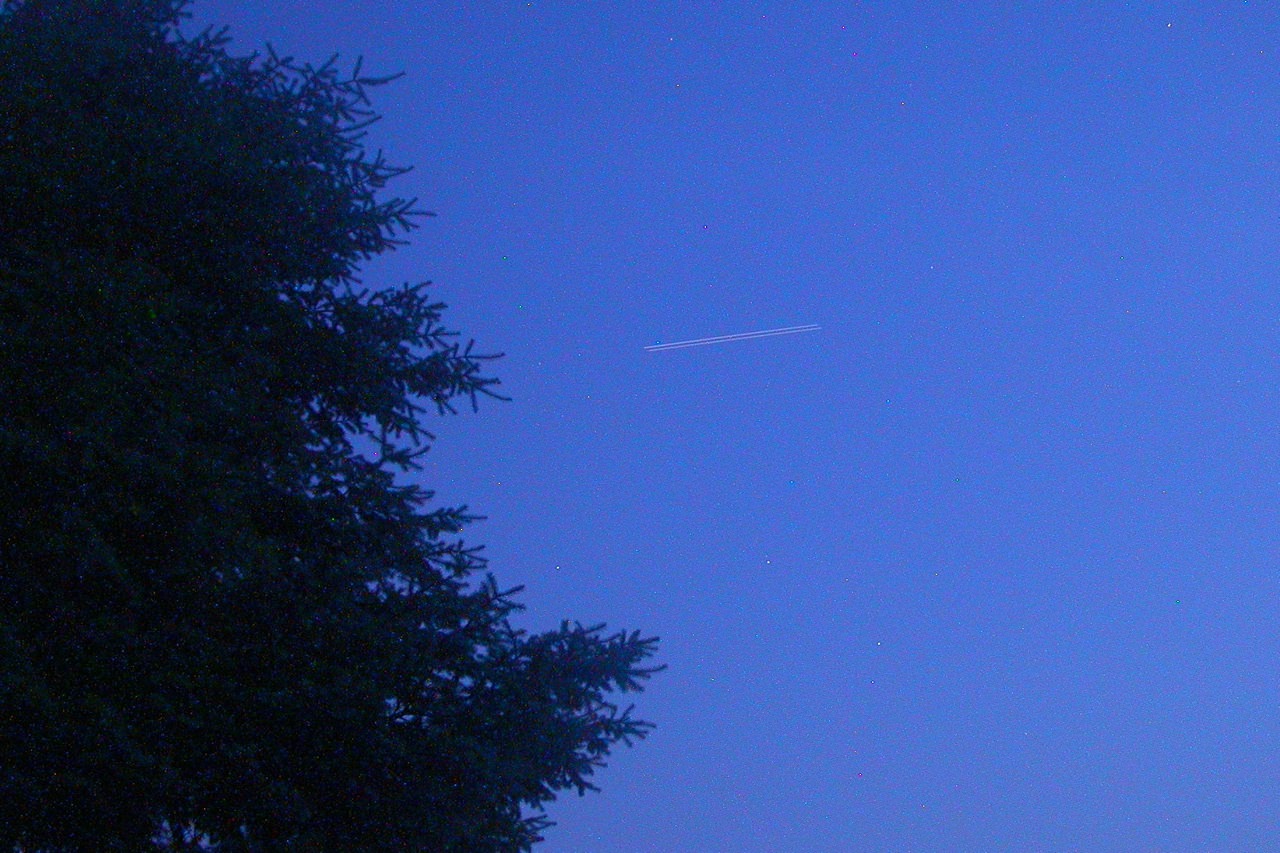KENNEDY SPACE CENTER – Just in the nick of time, NASA powered up its new countdown clock at the Press Site to tick down towards blastoff of the first launch of the agency’s new Orion crew capsule on Dec. 4 that will carry a new generation of explorers to exciting new destinations further into deep space than ever before.
Without any fanfare, NASA premiered the new digital clock today, Monday, Dec. 1, to replace the world famous analog clock – seen by countless billions across the globe – that was recently retired and detailed in my story – here.
Check out and compare the new and old countdown clocks in my exclusive photos herein.
“We were in a race against time to remove the old clock and replace it with the new clock over the Thanksgiving holiday period,” said NASA Kennedy Space Center spokesman George Diller in an exclusive interview with Universe Today on Monday.
“The plan was to have it ready in time for the first launch of Orion on Dec. 4,” Diller told me.
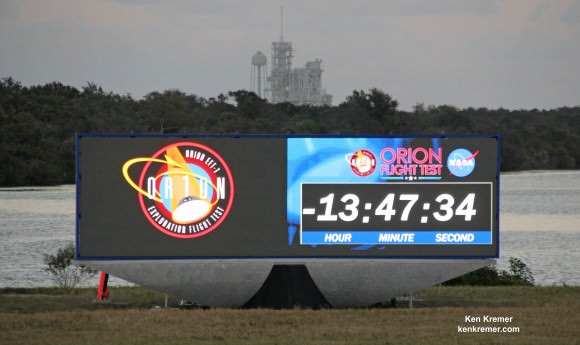
A team was working during the holiday.
Why replace the old clock?
“It was getting harder and harder to find the spare parts needed to fix the clock”.
“The original clock was designed in the 1960s”, Diller explained. It has been counting down launches, both manned and unmanned, for more than four decades.
“The clock has been in use since the Apollo 12 moon landing mission in November 1969.”

It was used continuously throughout the remaining Apollo launches and then for all 135 shuttle launches until the final shuttle mission STS-135 blastoff in July 2011. Since then it has been used exclusively on a plethora of unmanned NASA science launches and resupply missions to the International Space Station.
The old countdown clock was last used in September 2014 during the SpaceX CRS-4 launch to the ISS, which I attended along with the STS-135 launch.
The clock and adjacent US flag are officially called “The Press Site: Clock and Flag Pole” and were listed in the National Register of Historic Places on Jan. 21, 2000.
In the past few days workers dismantled and hauled off the old clock and installed the new one in place.
But the original base was left in place. The new clock is about the same length as the historic one, with a screen nearly 26 feet wide by 7 feet high.
While not true high-definition, the video resolution will be 1280 x 360.The new countdown clock sports a widescreen capability utilizing the latest breakthroughs in outdoor LED display technology, says NASA.
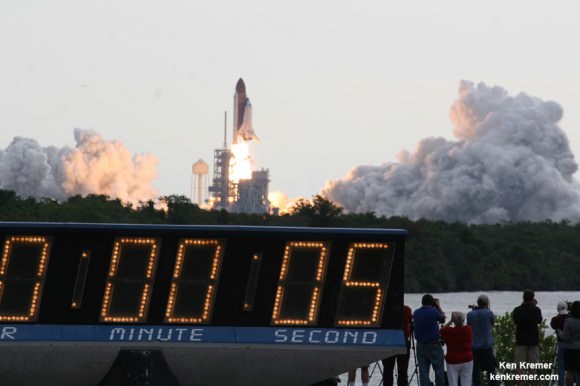
The display can provide images from multiple sources, as well as the countdown launch time. It was cool to see the new clock in action today.
As currently envisaged, the historic Countdown Clock was moved to the nearby Kennedy Space Center Visitor Complex (KSCVC).
It will be placed on permanent display for the public to see for the first time at the KSCVC main entrance sometime early next year, Diller explained.
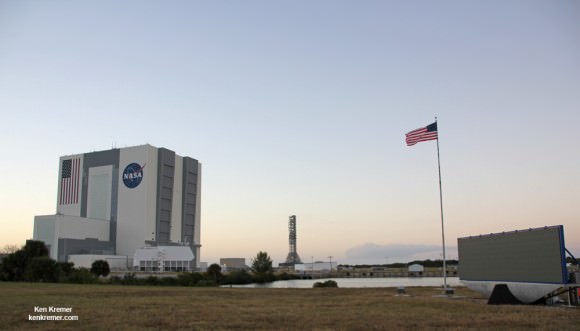
NASA TV will provide several hours of live Orion EFT-1 launch coverage with the new countdown clock – starting at 4:30 a.m. on Dec. 4.
Watch for Ken’s ongoing Orion coverage and he’ll be onsite at KSC in the days leading up to the historic launch on Dec. 4.
Stay tuned here for Ken’s continuing Orion and Earth and planetary science and human spaceflight news.
Ken Kremer
………….
Learn more about Orion, SpaceX, Antares, NASA missions and more at Ken’s upcoming outreach events:
Dec 1-5: “Orion EFT-1, SpaceX CRS-5, Antares Orb-3 launch, Curiosity Explores Mars,” Kennedy Space Center Quality Inn, Titusville, FL, evenings

